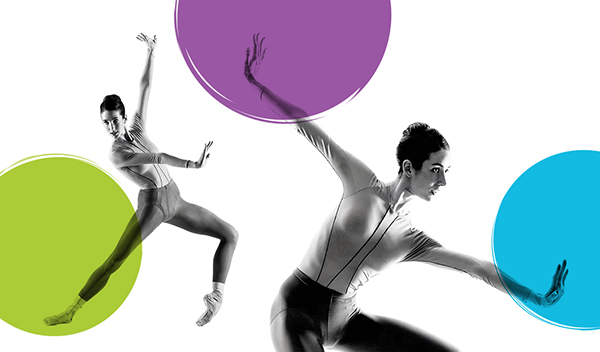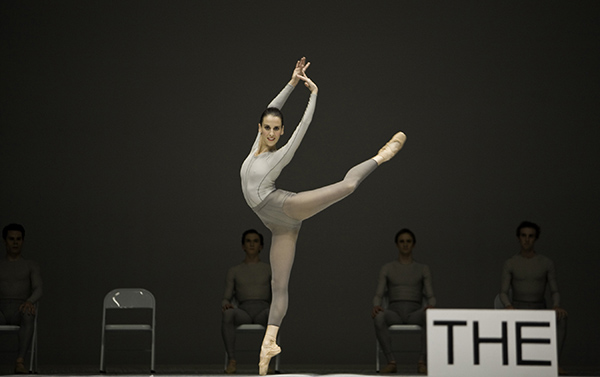Ballet
News+
Breaking Convention
Physical Thinking with William Forsythe
by Kathleen Smith
May 3, 2019

The Physical Thinking programme is a tribute to William Forsythe – an American choreographer with a special connection to The National Ballet of Canada. Forsythe made The Second Detail on the company in 1991 at the height of his influence. The ballet is returning for the programme which will also feature company premieres of Forsythe’s The Vertiginous Thrill of Exactitude from 1996 and Approximate Sonata 2016 (also from 1996 but re-worked for Paris Opéra Ballet in 2016).
The three works offer a master class in what makes Forsythe such an exciting ballet choreographer. The Second Detail is simultaneously playful and rigorous, set to an aggressively percussive score by Forsythe’s frequent collaborator, Dutch composer Thom Willems. Here, the neo-classical symmetry of ensemble formations is continually challenged and disrupted as Forsythe plays with tempo, group dynamics and off-axis lines executed at speed.
Daring treatment of established vocabularies appears again in The Vertiginous Thrill of Exactitude, set to Schubert’s Symphony No. 9. Forsythe’s choreography is a fittingly precise counterpart to the score with winking references to the classical ballet canon but the speed and attack required of dancers to pull it off makes it a work of the moment.
Approximate Sonata 2016 wraps precision in a laissez faire attitude. It’s a deceptively casual series of linked duets, with movement that rapidly accumulates and layers like a multi-exposure photograph. Once again working with Thom Willems, Forsythe asks dancers to skim through unpredictable technical challenges as the music morphs in mood and tempo.
In all three works Forsythe combines an enthusiasm for legacy elements such as pointe work with radical phrasing and pace, torqued shapes and an absence of the gender specificities of many ballets, both traditional and contemporary. In all of this, he’s been a choreographer ahead of the curve.
Now 69, the New York-born Forsythe was based in Germany for more than 40 years – but his impact on the ballet form has long been global. Classically trained, he created his first choreography, Urlicht in 1976 while still dancing with Stuttgart Ballet. Forsythe left Stuttgart to direct the state-funded Ballett Frankfurt in 1984.
Throughout the 90s, Forsythe brought a restless curiosity and intellectual energy to the form, incorporating ideas from the realms of philosophy, mathematics, literature, architecture, physics and even social dance to disrupt choreographic conventions. In collaboration with artists from all over the world, he developed whole new systems and protocols for the organization of moving bodies in space.
For dancers this has offered the challenge and joy of dealing with speed, balance and musicality in new ways. For audiences, who are called upon to pay close attention to sudden shifts in velocity, conceptual anomalies and multiple points of action, there is a real sense of immediacy and surprise amidst the rigor and athleticism of the dance.

At times, Forsythe’s eclectic interests and the lure of experimentation have taken him far from the cultural mainstream. Works such as White Bouncy Castle (a participatory work from 1993 that takes place in an inflated castle) and City of Abstracts (from 2000, the work played back footage of civilians recorded moving through public space) feel more media installation or conceptual art event than dance performance. Yet they are part and parcel of a career-long investigation of choreographic meaning. More than merely influential or startling, many of Forsythe’s works represent ground-breaking moments in which dance and choreography become part of a larger cultural conversation.
After leaving Ballett Frankfurt in 2004, Forsythe formed The Forsythe Company in order to continue investigating movement generation with a small band of trusted collaborators. Work from this era includes the research and development of Improvisation Technologies, an early digital platform for dance analysis and notation. The group disbanded in 2015 and Forsythe then worked independently, still based in Germany, and mostly on visual art projects, such as the retrospective exhibition Choreographic Objects.
Over the decades and despite his inter-disciplinary rambles, Forsythe has always found a way back to ballet, where his contribution has been most profound. With a recent relocation from Germany back to the US, Forsythe is teaching, remounting beloved works from the Frankfurt years, and yes, creating new work. Finally, North American ballet audiences are getting a firsthand sense of Forsythe’s legendary oeuvre.
Earlier this year, the choreographer unveiled a new ensemble work, Playlist (EP) for Boston Ballet, with whom Forsythe has a multi-ballet contract. Herman Schmerman (also performed by the National Ballet, as well as Steptext from 1989) received a critically acclaimed re-staging by New York City Ballet in May. And now a Toronto homecoming of sorts with Physical Thinking.
As with George Balanchine, the great choreographic visionary with whom he is often compared, Forsythe is being rediscovered by new generations who believe ballet has the capacity to be contemporary, smart and challenging, as well as beautiful.
Physical Thinking is onstage June 1 – 8, 2019.